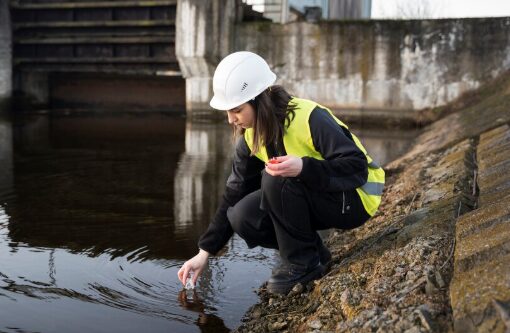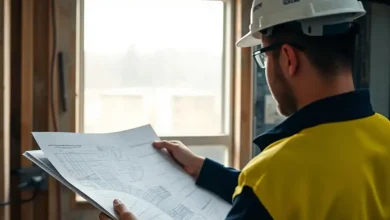Unblock the Future: Why Hydro Jetting Outperforms Traditional Drain Cleaning

Clogged drains and slow-moving pipes are more than just annoying—they can lead to big trouble. Over time, grease, debris, and even tree roots build up inside your plumbing. That’s where hydro jetting comes in. It’s a strong, safe, and smart way to clean your pipes using high-pressure water.
This guide breaks down how hydro jetting works, where it’s used, common problems it solves, and how it compares to other cleaning methods. We’ll also cover some risks and how to avoid them. Whether it’s your home, restaurant, or commercial space, hydro jetting can help.
Common Plumbing Issues Solved by Hydro Jetting
Recurring Clogs in Kitchen and Bathroom Drains
Kitchen sinks often get filled with grease, soap scum, and food waste. Bathroom drains catch hair, shampoo, and other buildup. Over time, these cause slow drains or full clogs.
Solution: Hydro jetting uses powerful streams of water to break up and flush out these blockages. It clears the whole pipe, not just a small path like a drain snake. This gives your plumbing a fresh start.
Tree Root Intrusion in Sewer Lines
Tree roots love to grow into old pipes, especially clay or cast iron ones. When roots get inside, they trap waste and cause backups.
Solution: A hydro jetting machine blasts water at up to 4,000 PSI. That’s strong enough to cut through small roots and clear the line. After that, a plumber can use a video camera inspection to check the damage.
Why Hydro Jetting Is Ideal for Commercial Properties
Grease Trap and Line Buildup in Restaurants
Restaurants, cafés, and commercial kitchens send a lot of fat, oil, and grease (FOG) down the drain. Over time, these cool and harden in the pipes, causing major backups.
Solution: Hydro jetting quickly removes thick grease buildup. It reaches the whole interior of the pipe—something that a basic drain cleaner or snake can’t do.
Multi-Tenant Buildings with Shared Drain Systems
Apartment buildings and office spaces often have shared drainage systems. A clog in one unit can affect many others.
Solution: Regular hydro jetting helps prevent emergencies by keeping all the lines clean. Property managers love it because it reduces complaints and costly repairs.
Challenges of Hydro Jetting and How to Avoid Them
Potential Damage to Old Pipes
Older plumbing systems made from clay, galvanized steel, or corroded metal can be weak. High-pressure water might cause cracks or leaks.
Solution: A professional plumber should always perform a camera inspection first. This helps spot weak spots or broken joints before jetting starts. If the pipes are too old, a gentler cleaning method might be better.
Temporary Fixes Without Follow-up Maintenance
Some people think hydro jetting is a one-time fix. But if the cause of the clog (like tree roots or heavy grease) comes back, so will the problem.
Solution: Set up a maintenance plan for regular jetting, especially in high-use areas like restaurants or old buildings. This keeps everything running smoothly.
Comparing Hydro Jetting with Traditional Drain Cleaning
Snaking vs. Jetting
Snaking uses a long metal wire with a tip to push through a clog. It’s quick and easy, but it doesn’t clean the whole pipe.
Hydro jetting, on the other hand, washes the entire inside of the pipe. It removes biofilm, grease, scale, and more—not just the clog itself.
Chemical Cleaners vs. Eco-Friendly Water Jetting
Chemical drain cleaners can seem like a fast fix. But they often contain harsh stuff like sodium hydroxide or sulfuric acid. These can damage your pipes and the environment.
Hydro jetting only uses clean water under high pressure. It’s a green, non-toxic solution that’s safe for your plumbing and the planet.
Other Uses for Hydro Jetting
Industrial Pipe Cleaning
In factories and plants, pipes carry slurry, wastewater, and chemical runoff. These can form thick sludge inside the lines.
Hydro jetting removes heavy buildup quickly and safely. It keeps things flowing and reduces downtime.
Storm Drain and Gutter Maintenance
Cities and construction zones use hydro jetting to clear out storm drains. Leaves, dirt, and trash can pile up and block water flow.
Regular jetting helps prevent flooding and drain backups during heavy rains.
How Hydro Jetting Works
Hydro jetting uses a special machine with a water tank, motor, and hose. The hose has a nozzle with tiny holes that spray water backward and forward.
When the nozzle is inserted into the pipe, water sprays out with huge force. The backward jets push the nozzle forward while the front jets break up clogs. It scrubs the pipe clean from all angles.
The water pressure can be adjusted depending on the pipe’s size and condition.
Safety and Prep Tips
- Always hire a licensed plumber trained in hydro jetting
- Get a camera inspection first to check pipe condition
- Don’t try DIY hydro jetting—professional tools are powerful
- Follow up with regular inspections for lasting results
Conclusion
Hydro jetting is one of the most powerful and effective ways to clean your pipes. Whether you’re dealing with a grease clog, tree roots, or just want to prevent future problems, this method offers deep, safe cleaning.
From homes to restaurants, commercial properties to municipal drains, hydro jetting can handle it all. It’s fast, eco-friendly, and gets your plumbing working like new.
Just remember—always work with a pro, and keep your pipes on a regular schedule for maintenance. Clean pipes mean peace of mind.

Source: Unblock the Future: Why Hydro Jetting Outperforms Traditional Drain Cleaning

